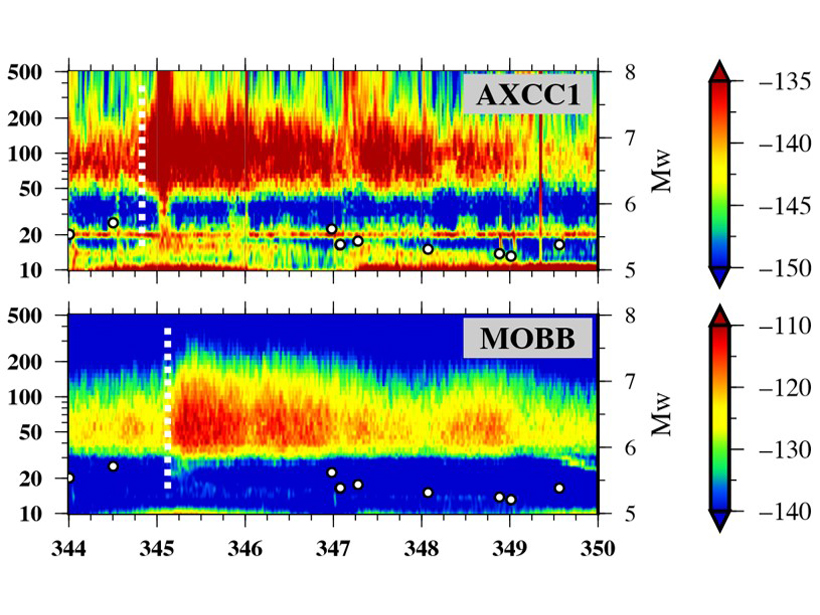Source: Geochemistry, Geophysics, Geosystems
The Earth’s “hum” is an enigmatic, low-frequency signal that has been known to seismologists for some time, but whose source has remained poorly understood. It is generally thought that the hum is generated in ocean basins through the interaction of infragravity waves with the seafloor. However, the hum is not evenly distributed in space or time, and the exact mechanisms through which it is generated remain unclear.
Maurya et al. [2019] combine seismic observations with ocean wave height data to track two large storms in the Pacific Ocean and delineate how each of them generates hum. Their work shows that the distribution of Earth’s hum sources strongly depends on the propagation characteristics of the corresponding storms and how the storms interact with the coastline. This study has important implications not only for how we understand the generation of infragravity waves in the ocean, but also for studies of deep Earth structure that take advantage of the hum signal.
Citation: Maurya, S., Taira, T., & Romanowicz, B. [2019]. Location of seismic “hum” sources following storms in the North Pacific Ocean. Geochemistry, Geophysics, Geosystems, 20. https://doi.org/10.1029/2018GC008112
—Maureen Long, Editor, Geochemistry, Geophysics, Geosystems
Text © 2019. The authors. CC BY-NC-ND 3.0
Except where otherwise noted, images are subject to copyright. Any reuse without express permission from the copyright owner is prohibited.

